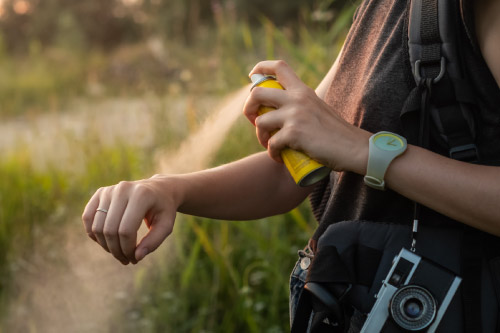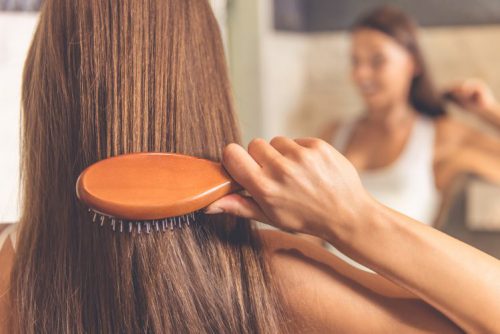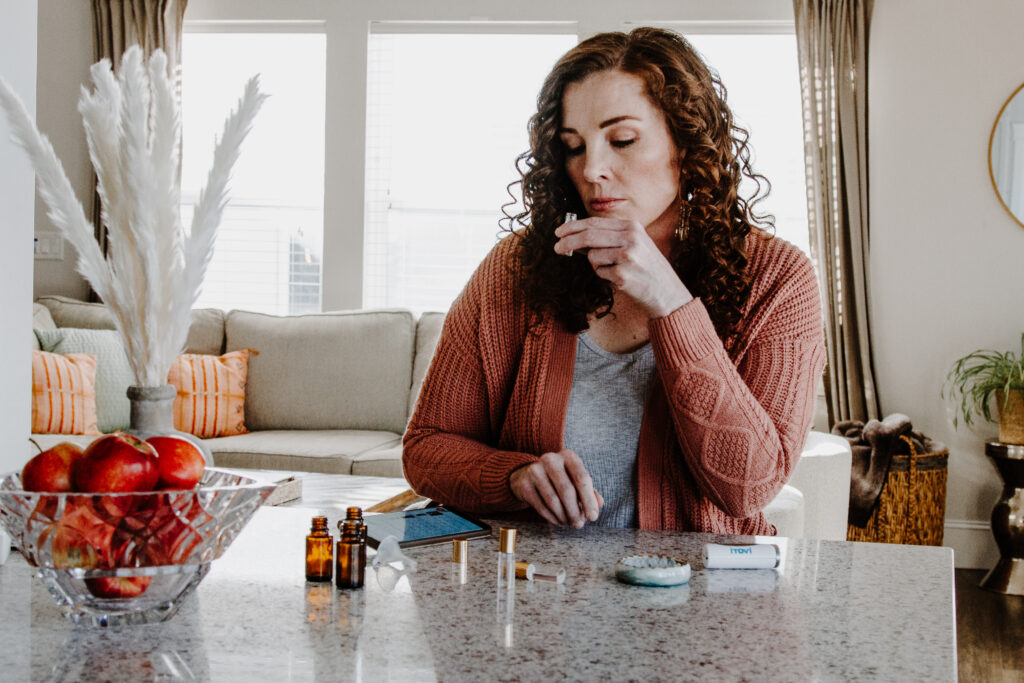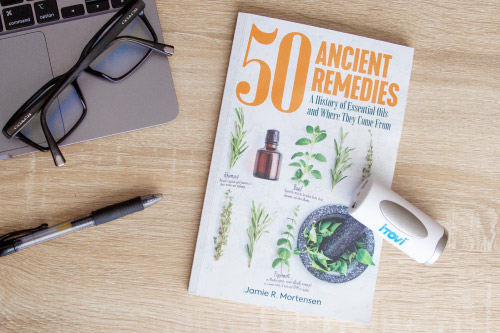
Spring is here! Which means the bugs are back to accompany the blossoms and sunshine.
We respect the many important jobs that bugs do…as long as they do them far away from us, our skin, our porches, picnic blankets, and homes! So, when the bugs come buzzing and biting, what’s a nature-conscious person to do? Make their own bug-repellant out of essential oils of course!
In this blog post, we’ll cover the basics of WHY and HOW to make homemade bug sprays with essential oils.
WHY to use DIY Bug Sprays made with essential oils
Reason #1: Chemicals
Ever accidentally inhaled a commercial bug repellant and wondered if you needed to call poison control? A lot of commercial bug sprays carry unhealthy chemicals and big, all-caps warnings on their labels against inhaling them.
DEET (one of the most popular commercial brands of insect repellent) can cause skin irritation and has even been found to “cause neurons to die in regions of the brain that control muscle movement, learning, memory and concentration” (1).
And children, due to the highly-absorbent nature of their skin, are at particular risk. Yikes!
Reason #2: Thrift
Some people save money by making their own bug repellants rather than buying them. And some don’t.
Multiple factors—including which products you’re replacing, which DIY recipe you go with, and where you buy your essential oils—will determine whether or not you’ll end up saving any money by making your own DIY bug spray.
The trick is to find a DIY recipe that is effective for the kind of bugs you are targeting and cost-efficient for you.
Reason #3: Accomplishment and Aromatherapy
DIYers know—DIY feels good! And if you end up actually enjoying the smell of your bug repellent, all the better! Those who get a kick out of DIY projects and/or love surrounding themselves with EO scents have another reason to try these DIY bug spray.
What’s the catch?
The catch is that most DIY Essential-Oil Bug Repellents don’t last as long as commercial repellents and they typically haven’t gone through the same rigorous, EPA-standard testing.
If you’re in a high-risk area for serious, insect-spread diseases, like Lyme disease, Zika, malaria, etc, then it would make more sense to go with the heavily-tested DEET products.
HOW to make DIY Bug Spray with essential oils
There are a lot of recipes out there for DIY bug sprays, each one reflecting the preferences, needs, and even the budget of the author in question.
If you want a ready-made recipe to follow, we recommend these popular pages:
If you want an overview of DIY bug sprays that will allow you to creatively customize a unique spray for yourself and your family—read on!
Step 1. Get a bottle
Convenient on-the-go 4oz spritz bottle? Heavy-duty 8oz bottle with a trigger sprayer? You choose! Just know that oil-inclusive solutions can separate, so always give your bottle a good shake before you use it.
Step 2: Add your base
Most bug sprays recommend that the base of your spray be roughly made up of half distilled water and half witch hazel (apple cider vinegar and vodka are also options). Easy peasy.
Step 3: Add your essential oils
Which oils do I use?
There are many essential oils popularly used in DIY Bug Repellents:
- Basil*
- Cedarwood^
- Cinnamon
- Citronella*^
- Eucalyptus*
- Geranium*
- Lavender*
- Lemon Eucalyptus*^
- Lemongrass*
- Oregano^
- Patchouli
- Peppermint*
- Rosemary*
- Spearmint*^
- Sweet Orange
- Tea Tree*
- Thyme^
*=particularly recommended for mosquitos
^=studied in repelling ticks
How many drops of oil do I put in?
Well, the NAHA (National Association of Holistic Aromatherapy) recommends, for child-safety purposes, that essential oils be diluted down to 0.5-2.5% in solutions.
Luckily, most DIY bug repellent recipes fit within that range. Not all of them though.
For reference, here is a handy chart for your dilutions:
| No. of Drops ->
Solution Volume |
10 drops | 20 drops | 30 drops | 40 drops | 50 drops | 60 drops | 70 drops |
| 2oz | 0.8% | 1.6% | 2.5% | 3.4% | 4.2% | 5.0% | 5.9% |
| 4oz | 0.4% | 0.8% | 1.3% | 1.7% | 2.1% | 2.5% | 2.9% |
| 8oz | 0.2% | 0.4% | 0.63% | 0.85% | 1.1% | 1.3% | 1.5% |
Underlined: Above the recommended NAHA dilution limit.
Step 4: Add your extras
What extras? These minor ingredients are optional, but useful.
To extend the effectiveness of your solution, you may want to add just a little:
- Vegetable glycerin (½ a teaspoon should do, but you may add as much as a whole tablespoon). This will help your insect repellent stick to your skin better, giving you longer protection.
- Vanillin via vanilla extract (1 tablespoon per cup/8 oz of solution). Vanillin works as a “fixative” agent that keeps your insect repellent from evaporating as quickly as it otherwise would, giving you longer protection.
- Coconut oil (there is not much data to go off of, but 2 tablespoons seems a popular amount to add). Certain coconut oil compounds have insect repellent properties in of themselves. Plus coconut oil has emulsifying properties that will help your essential oils dilute into your overall solution. A little neem or soybean oil may also be helpful.
Can citronella oil repel bugs and insects?
Yes! Citronella oil has been tested a number of times for its insect-repellent effects (study 1, study 2). However, the catch is that breathing in citronella can sometimes irritate the lungs.
Lemon eucalyptus oil has a better track record for both lung safety and some impressive research when it comes to repelling insects. Certain constituents of lemon eucalyptus have even been studied and approved by the Environmental Protection Agency as an insecticide.
Studies have also found that pure essential oils (rather than synthetic), when mixed together can enhance each other’s insect repelling effects! So don’t be afraid to try mixing your oils in your bug repellent solutions!
Bonus tip: Lavender oil can be a nice balm for itches if you do get bitten by a mosquito!
Conclusion
Ultimately, do what works for you and what works against the bugs in your area. Remember to reapply your bug repellent (DIY or store bought) as needed. And enjoy your spring!




